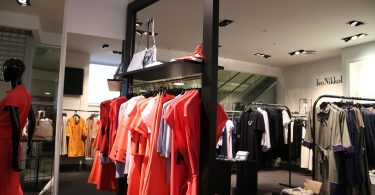Sometimes after a flurry of using the little grey cells, in the shape of uni assignments, one needs a little treat.
Sometimes after a flurry of using the little grey cells, in the shape of uni assignments, one needs a little treat. I decided to visit the Hayward Gallery, Southbank Centre to see ‘Brain Activity’, an exhibition of the work of the British artist David Shrigley.
Although he is probably best known for his thought provoking and humorous cartoons, his work includes sculpture, photography, printmaking, animation and music. Being a writer I have always been excited by art which also encompasses text, as Shrigley’s often does; which is what first interested me in his work. I bought a book of his postcards which I found so entertaining I couldn’t bear to send them to anyone.
This exhibition is not only entertaining, capturing the artist’s humour, but intriguing too. The gallery guide emphasises that he leaves the viewer to ‘complete the narratives for ourselves’ having told the stories in ‘the simplest way’. I appreciate that some may say ‘doesn’t all art do this?’ but I for one feel Shrigley is a master of this art.
 It begins with a collection of objects which fulfil this criterion. A headless ostrich, a crushed stepladder and an extremely long finger which points to..? Well it is up to us to decide. The first animated film Light Switch (2007) was showing in the first room and presents a ‘narrative in its barest form’ of an unknown character switching on and off the light. Interestingly, music seemed to be playing in time to the switching. However as it turned out the music was coming from another animation Headless Drummer (2012) which was playing in the next room. The simple animations are highly addictive to watch – I actually sat to watch for at least ten minutes the animation of a middle aged man sleeping in his bed, his arms fidgeting occasionally as they rested over the sheets and blankets. It was mesmerising; if only I could recapture this enthusiasm while being kept awake by my partner’s snuffling and snoring. Perhaps I should have a new perspective of it from now on. Shrigley does prefer to see the humorous side of things you can’t change, so maybe this is the message I should be taking from this piece.
It begins with a collection of objects which fulfil this criterion. A headless ostrich, a crushed stepladder and an extremely long finger which points to..? Well it is up to us to decide. The first animated film Light Switch (2007) was showing in the first room and presents a ‘narrative in its barest form’ of an unknown character switching on and off the light. Interestingly, music seemed to be playing in time to the switching. However as it turned out the music was coming from another animation Headless Drummer (2012) which was playing in the next room. The simple animations are highly addictive to watch – I actually sat to watch for at least ten minutes the animation of a middle aged man sleeping in his bed, his arms fidgeting occasionally as they rested over the sheets and blankets. It was mesmerising; if only I could recapture this enthusiasm while being kept awake by my partner’s snuffling and snoring. Perhaps I should have a new perspective of it from now on. Shrigley does prefer to see the humorous side of things you can’t change, so maybe this is the message I should be taking from this piece.
Shrigley’s humour was present in Gravestone (2008) which was a simple list on a tombstone. There was a certain gravitas about the granite and gold leafed piece with bread, baked beans and aspirin amongst the words engraved. It reflects the artist’s interests in lists. “I’ve always been interested in lists. I am interested in how one thing can be synthesized into another and all information can be jumbled, put in the wrong place and suddenly it starts to mean something else.” It reminded me of life itself.
His drawings as ever made me laugh out loud as well as silently making me think. A new collection hangs behind a gate that we are instructed ‘not to linger’ at. As if we needed telling. Go through the gate and absorb some more of this artist’s take on the world.
His construction of hundreds of insects drawn from his imagination and made from found materials was fascinating. The insects had their own world for us to view. To the side of the arrangement was a small hole in the wall for us to crawl through should the piece become unnerving for us humans. It was good to see things from the other side so to speak.
A plinth of misshapen things shows sculptures, a taxidermy headless squirrel and a collection of the artist’s toenail clippings. He says of this particular piece, “It’s interesting to think how much of oneself is cut off or falls off (nails, hair, skin, teeth) in the course of a lifetime.” Thought provoking indeed.
One animation that had a particular response on those viewing it was New Friends (2006). It starts off with a group of marching squares which takes an unexpected twist when one falls through a hole in the ground. I won’t spoil the film but just to say the surprise ending of this dark tale of social conformity had the audience turning to one another with nervous laughter. The message was brilliantly conveyed.
There are two sculpture terraces too which can be viewed from the inside, which considering it was pouring with rain was perhaps a good thing.
This exhibition runs until 13th May 2012 at the Hayward Gallery, Southbank. It claims to ‘engage our brains as much as excite our sense of humour’. If your brains aren’t too exhausted from the work this semester, dash down there to engage them in the work of David Shrigley. It won’t disappoint.








